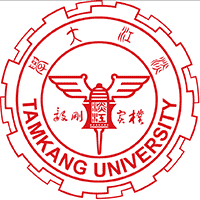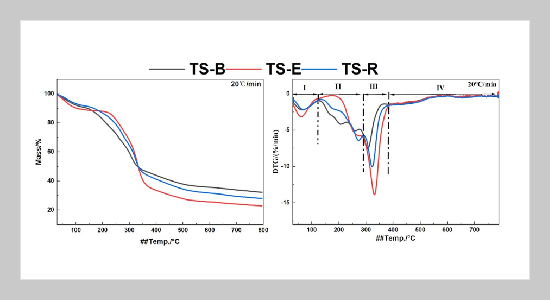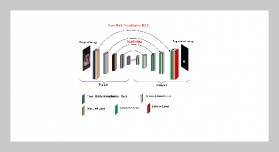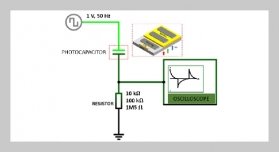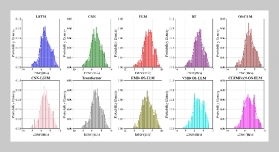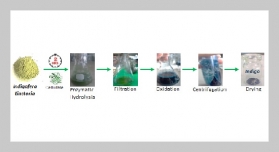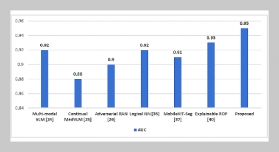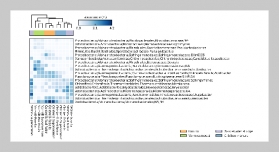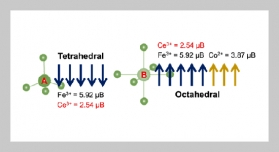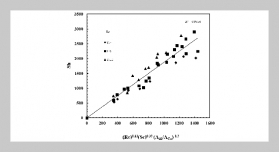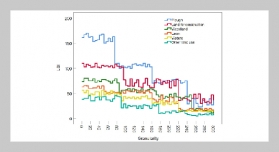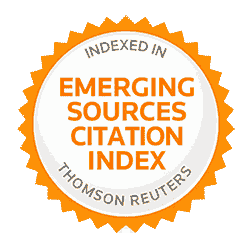- [1] X. Wang, Z. Wang, Y. Dai, K.-y. Ma, L. Zhu, and H. Tan, (2017)“Thermogravimetric study on the flue cured tobaccol eaf pyrolysis and combustion using adis tributed activation energy model" Asia-Pacific Journal ofChemicalEngineering12:75–84.
- [2] J. Cai, B. Li, C. Chen, J. Wang, M. Zhao, and K. Zhang, (2016)“Hydrothermalcarbonizationoftobaccostalkfor fuelapplication"BioresourceTechnology220:305 311.DOI:10.1016/j.biortech.2016.08.098.
- [3] C. Kunlin, H. Feng, Z. Yanguo, and L. Qinghai,(2019) “The investigation of co-combustion characteristics of tobacco stalk and low rank coal using amacro-TGA" Fuel 237:126–132.DOI:10.1016/j.fuel.2018.09.149.
- [4] H. Chen, G. Lin, C. Yingquan, W. Chen, and Y. Haiping, (2015) “Biomass Pyrolytic Polygeneration of Tobacco Waste: Product Characteristics and Nitrogen Trans formation"Energy&Fuels30:DOI: 10.1021/acs.energyfuels.5b02255.
- [5] C.Wang, L. Li, R. Chen, X. Ma, M. Lu, W. Ma, and H. Peng, (2019) “Thermal conversion of tobacco stem into gaseous products" Journal of Thermal Analysis and Calorimetry 137(3): 811–823. DOI: 10.1007/s10973 019-08010-4.
- [6] Y. J. Sung and Y. B. Seo, (2009) “Thermogravimetric study on stem biomass of Nicotiana tabacum" Thermochimica Acta 486(1): 1–4. DOI: 10.1016/j.tca.2008.12.010.
- [7] M. Liang, T. Yang, G. Zhang, K. Zhang, L. Wang, R. Li, Y. He, J. Wang, and J. Zhang, (2023) “Effects of hydrochloric acid washing on the structure and pyrol ysis characteristics of tobacco stalk" Biomass Conver sion and Biorefinery 13(8): 6817–6830. DOI: 10.1007/s13399-021-01616-5.
- [8] K.Cen,J. Zhang, Z. Ma, D.Chen, J. Zhou, and H. Ma, (2019) “Investigation of the relevance between biomass pyrolysis polygeneration and washing pretreatment under different severities: Water, dilute acid solution and aque ous phase bio-oil" Bioresource Technology 278: 26–33. DOI: 10.1016/j.biortech.2019.01.048.
- [9] N. Khuenkaeo, B. MacQueen, T. Onsree, S. Daiya, N. Tippayawong, and J. A. Lauterbach, (2020) “Bio oils from vacuum ablative pyrolysis of torrefied tobacco residues" RSC Advances 10: 34986–34995.
- [10] Z. Li, D. Huang, Z. Tang, C. Deng, and X. Zhang, (2010) “Fast determination of chlorogenic acid in tobacco residues using microwave-assisted extraction and capillary zone electrophoresis technique" Talanta 82 4: 1181 5.
- [11] A. de Lucas, P. Cañizares, M. A. García, J. Gómez, and J. F. Rodríguez, (1998) “Recovery of Nicotine from Aqueous Extracts of Tobacco Wastes by an H+-Form Strong-Acid Ion Exchanger" Industrial & Engineering Chemistry Research 37(12): 4783–4791. DOI: 10.1021/ie9801958.
- [12] Y. Li, L. Wan, M. Yan, X. Tang, S. Gao, and Y. Chen, (2023) “Recycling of tobacco waste: development of re constituted tobacco sheet with suitable strength and low toxicity" Resources, Conservation & Recycling Advances:
- [13] S. Zhou, Q. He, X. Wang, M. Ning, Y. Yang, Y. Xu, Y. Zhang, P. Zou, Z. Tian, K. Chen, H. Wang, and S. She, (2017) “An insight into the roles of exogenous potassium salts on the thermal degradation of flue-cured tobacco" Journal of Analytical and Applied Pyrolysis 123: 385–394. DOI: 10.1016/j.jaap.2016.11.001.
- [14] S. Zhou, M. Ning, Y. Xu, Y. Hu, J. Shu, C. Wang, S. Ge, Z. Tian, S.-k. She, and H. Qing, (2013) “Thermal degradation and combustion behavior of reconstituted tobacco sheet treated with ammonium polyphosphate" Journal of Analytical Applied Pyrolysis 100: 223–229.
- [15] A. Sluiter, B. Hames, R. O. Ruiz, C. Scarlata, and D. Templeton, (2004) “Determination of structural carbo hydrates and lignin in biomass" Laboratory Analytical Proce dure:
- [16] G. K. Parshetti, S. Kent Hoekman, and R. Balasubra manian, (2013) “Chemical, structural and combustion characteristics of carbonaceous products obtained by hydrothermal carbonization of palm empty fruit bunches" Bioresource technology 135: 683–9.
- [17] Y. Fan, L. Li, N. Tippayawong, S. Xia, F. Cao, X. Yang, A. Zheng, Z. Zhao, and H. Li, (2019) “Quantitative structure-reactivity relationships for pyrolysis and gasi f ication of torrefied xylan" Energy 188: 116119. DOI: 10.1016/j.energy.2019.116119.
- [18] S. Ajouguim, K. Abdelouahdi, M. Waqif, M. Ste fanidou, and L. Saâdi, (2019) “Modifications of Alfa f ibers by alkali and hydrothermal treatment" Cellulose 26(3): 1503–1516. DOI: 10.1007/s10570-018-2181-9.
- [19] A. Gómez-Siurana, A. Marcilla, M. Beltrán, D. Berenguer, I. Martínez-Castellanos, and S. Menargues, (2013) “TGA/FTIR study of tobacco and glyc erol–tobacco mixtures" Thermochimica Acta 573: 146 157. DOI: 10.1016/j.tca.2013.09.007.
- [20] N. Shimada, H. Kawamoto, and S. Saka, (2008) “Different action of alkali/alkaline earth metal chlorides on cellulose pyrolysis" Journal of Analytical and Applied Pyrolysis 81(1): 80–87. DOI: 10.1016/j.jaap.2007.09. 005.
- [21] Z. Ma, D. Chen, J. Gu, B. Bao, and Q. Zhang, (2015) “Determination of pyrolysis characteristics and kinetics of palm kernel shell using TGA–FTIR and model-free integral methods" Energy Conversion and Management 89: 251–259. DOI: 10.1016/j.enconman.2014.09.074.
- [22] X. Li, Q. Zhao, M. Han, K. Zhang, Z. Guo, B. Li, W. Wang, X. Wei, and M. Liang, (2024) “Pyrolysis characteristics and kinetic analysis of tobacco stem pre treated with different solvents" Biomass Conversion and Biorefinery 14(1): 501–515. DOI: 10.1007/s13399 021-02280-5.
- [23] G. Pin, Z. Yiyuan, M. Fang, Z. Yihui, L. Zhenhong, Z. Wenqi, and X. Gang, (2016) “Preparation and characterization of hydrochar from waste eucalyptus bark by hydrothermal carbonization" Energy 97: 238–245. DOI: 10.1016/j.energy.2015.12.123.
- [24] L. Yanfen and M. Xiaoqian, (2010) “Thermogravimet ric analysis of the co-combustion of coal and paper mill sludge" Applied Energy 87(11): 3526–3532. DOI: 10. 1016/j.apenergy.2010.05.008.
- [25] W.-W. Tian, F. Xu, S.-J. Xing, R. Wu, and Z.-Y. Yuan, (2023) “Comprehensive study on the thermal decompo sition process of waste tobacco leaves and stems to investigate their bioenergy potential: Kinetic, thermodynamic, and biochar analysis" Thermochimica Acta 723: 179473. DOI: 10.1016/j.tca.2023.179473.
- [26] J.L.GoldfarbandS.Ceylan,(2015)“Second-generation sustainability: Application of the distributed activation energy model to the pyrolysis of locally sourced biomass–coal blends for use in co-firing scenarios" Fuel 160: 297–308. DOI: 10.1016/j.fuel.2015.07.071.
- [27] Z. Zhang, C. He, T. Sun, Z. Zhang, K. Song, Q. Wu, and Q. Zhang, (2016) “Thermo-physical properties of pretreated agricultural residues for bio-hydrogen production using thermo-gravimetric analysis" International Journal of Hydrogen Energy 41: 5234–5242.
- [28] Z. Wang, Z. He, Z. Zhao, S.-l. Yi, and J. Mu, (2017) “Influence of ultrasound-assisted extraction on the pyroly sis characteristics and kinetic parameters of eucalyptus" Ultrasonics sonochemistry 37: 47–55.
- [29] Z. Yıldız and S. Ceylan, (2019) “Pyrolysis of tobacco fac tory waste biomass" Journal of Thermal Analysis and Calorimetry 136(2): 783–794. DOI: 10.1007/s10973 018-7630-z.
- [30] C. Sun, Z. Yang, Z. Zheng, W. Li, H. Tan, Y. Huang, and Y. Zhang, (2023) “Exploring how lignin promoting the co-pyrolysis with polylactic acid: Artificial neural network modeling, kinetic analysis and product distribution" Sustainable Materials and Technologies 35: e00549. DOI: 10.1016/j.susmat.2022.e00549.
- [31] D. Daugaard and R. Brown, (2003) “Enthalpy for Pyrolysis for Several Types of Biomass" Energy & Fuels ENERGFUEL17: DOI:10.1021/ef020260x.
- [32] L. Moshan, T. Yishui, H. Erfeng, D. Chongyang, L. Chenhao, and S. S, (2022) “Pyrolysis kinetics and thermodynamic analysis of biogas residue and its pyrolysis product characteristics research" Acta Energiae Solaris Sinica 43(06): 226–233. DOI: 10.19912/j.0254-0096. tynxb.2021-1132.
- [33] J. Mao, C. Xiao, D. Gong, J. Zhu, and J. Qian, (2023) “Study on mechanism of cellulose hydrolysis during alkali thermal pretreatment of lignocellulose by density functional theory" Biomass and Bioenergy 172: 106754. DOI: 10.1016/j.biombioe.2023.106754.
- [34] R. Kaur, P. Gera, M. K. Jha, and T. Bhaskar, (2018) “Pyrolysis kinetics and thermodynamic parameters of cas tor (Ricinus communis) residue using thermogravimetric analysis" Bioresource Technology 250: 422–428. DOI: 10.1016/j.biortech.2017.11.077
